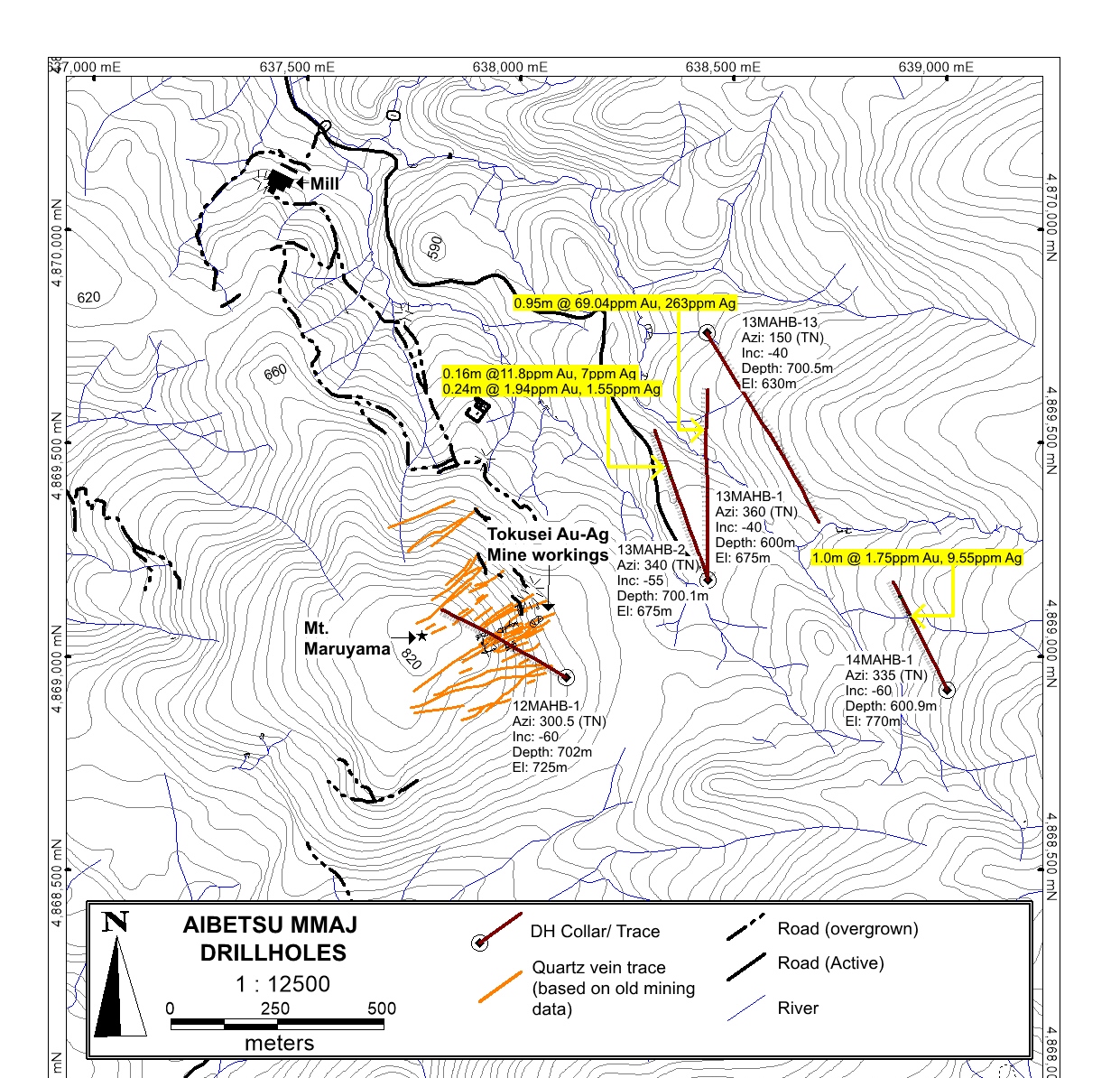History
The Aibetsu Project area contains the Tokusei mine, which produced 38,580 ounces of gold and 472,620 ounces of silver, mined from quartz-adularia veins between 1930-1942¹. No information or production statistics are available on historical exploration and development work conducted in the other mine areas located in the Aibetsu Project area pre-WWII.
The project area has had only limited exploration since the 1940’s. As part of a regional metallogenic study, the MMAJ undertook regional surveys (geophysical and drainage sediment sampling) and later prospect evaluation work (2000-02) over the Tokusei mine area. A total of 730 grid-based soil and rock samples were collected and analyzed, along with 29.0-line km of ground IP-resistivity surveying reported by the MMAJ2.
Coincident resistivity highs and Au-As-Hg soil anomalies were identified to the south-southwest and northeast of the Tokusei mine workings. Five diamond drill-holes (3,400 m) targeted these anomalies, and extensions to the Tokusei vein system. Significant mineralized intercepts from holes drilled beneath a Au-As-Hg soil anomaly located approximately 500 m northeast of the Tokusei mine workings include 0.95 m @ 69 g/t Au, 263 g/t Ag (13MAHB-1) and 0.16 m @ 11.8 g/t gold and 7 g/t Ag (13MAHB-2), in two separate drill-holes. An gold intercept of 1.0 m @ 1.92 g/t gold and 11 g/t silver from within a 7.5 m stockwork zone was recorded from drill hole 14MAHB-1, located approximately 500 m to the southeast of drill hole 14MAHB-1, along a parallel structure (true widths were not reported or are unavailable)
 MMAJ diamond drill hole location and significant assays in and around the Tokusei mine area, Aibetsu Project.
MMAJ diamond drill hole location and significant assays in and around the Tokusei mine area, Aibetsu Project.

